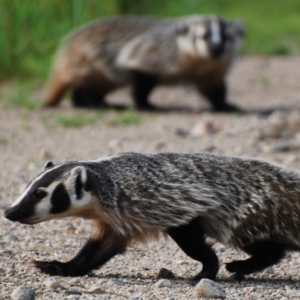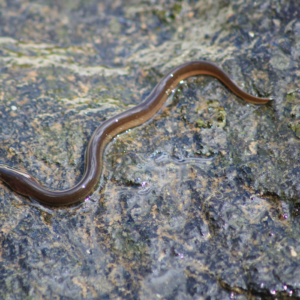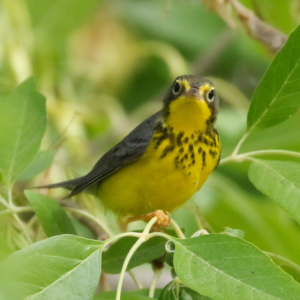Burrowing Owl
The Burrowing Owl is unlike most owls… it nests underground in burrows made by other animals. Save endangered species today by joining one of our campaigns!
Help End the ExtinctionVital Signs
- Common name: Burrowing Owl
- Latin name: Athene cunicularia
- Conservation Status: Endangered
- Range: British Columbia, Alberta, Saskatchewan, Manitoba
- Lifespan: Average 3-4 years
- Size: 19-25 cm tall, wingspan of 155 cm, weighs 125-185 g
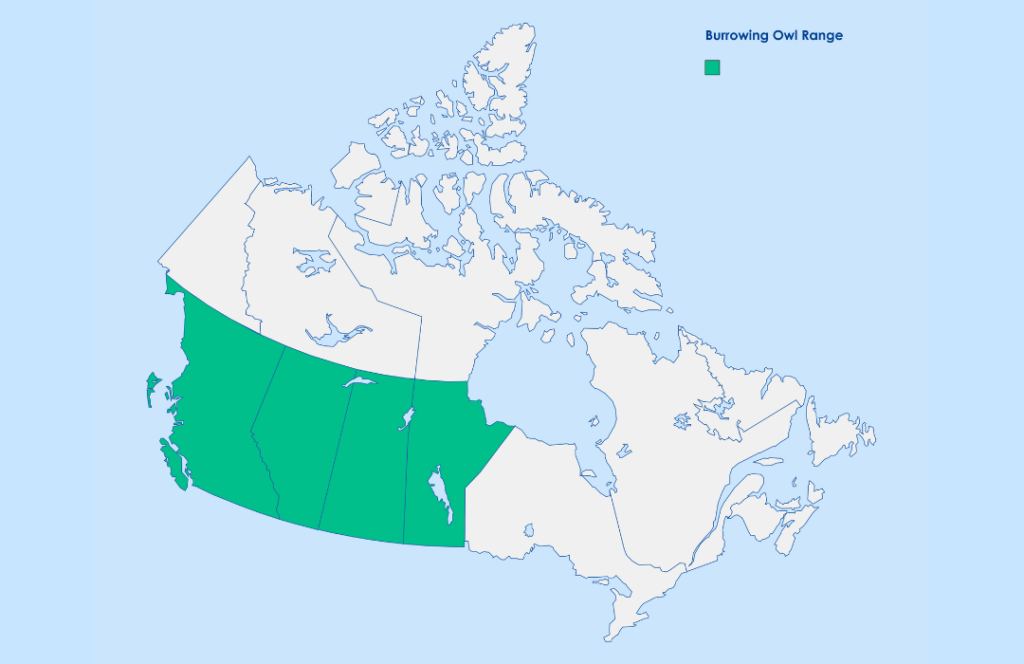
Burrowing Owls look like they’re on stilts thanks to their long, thin legs. They have dark brown feathers on their head and back, with lighter coloured ones on their bellies. The feathers on their backs are white, brown, and beige, giving the appearance of spots.
Burrowing Owl Facts
- Hunt by hovering, running, or walking
- Baby owls play-hunt, and do so by jumping on their siblings and parents
- Can mimic the hiss of a rattlesnake to ward off predators
- Often preen themselves, but some mated pairs preen one another
- Sometimes place bottle caps, foil, paper, and bits of trash around their burrow. It’s thought this shows the burrow is occupied
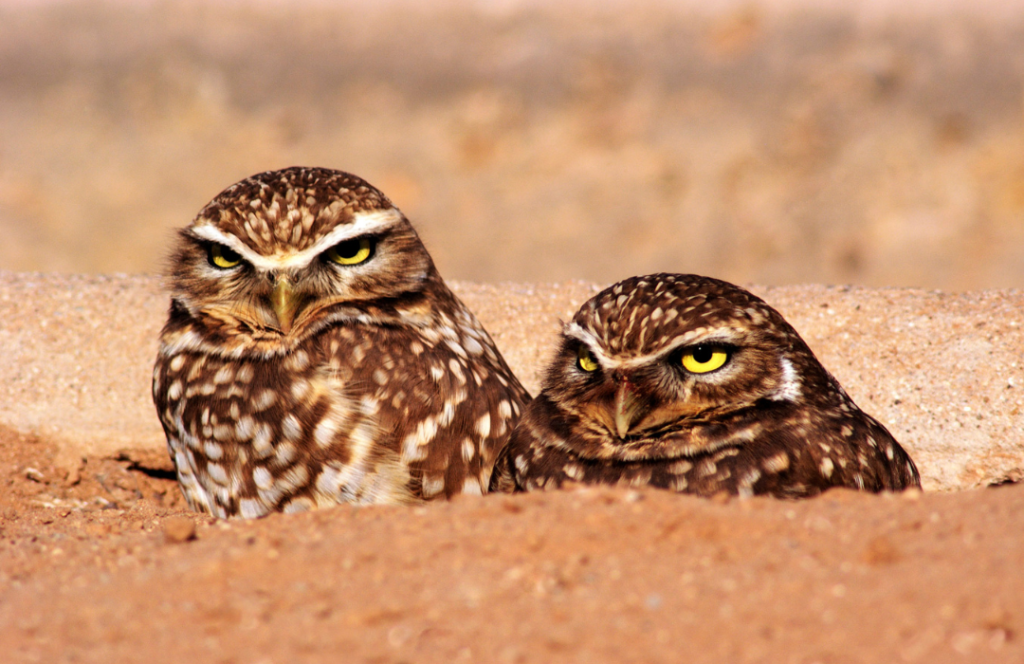
Threats
In the past, Burrowing Owls were most threatened by the conversion of grassland into cropland, and the habitat fragmentation and degradation it caused. Now, the biggest threats are vehicle collisions, a lack of prey, and climate change.
Burrowing Owls require grassland with few plants and existing burrows. They rely on holes made by ground squirrels, badgers, and foxes to make their nests. Unfortunately, there have been declines in these species populations, too, so Burrowing Owls can’t find good nesting sites.
Another threat Burrowing Owls face is the use of pesticides. These limit prey availability, and are believed to affect the owls’ reproductive success. It was found that the amount of chicks the owls had dropped 83% after pesticides called “carbaryl” and “carbofuran” were used near nests.
What’s Being Done
Burrowing Owls are federally protected under the Species At Risk Act. They are also protected in Alberta and Saskatchewan, where the main goal is encouraging landowners to protect Burrowing Owl habitats. These efforts are called “Operation Burrowing Owl” and “Operation Grassland Community”. Burrowing Owls are protected in all provinces where they are found.
There’s also a Burrowing Owl recovery team in Saskatchewan that have a recovery plan. From 1995 to 2002, they established a conservation breeding colony. This colony allowed them to develop a successful release technique for the owls and research ways to increase wild owls’ survival odds.
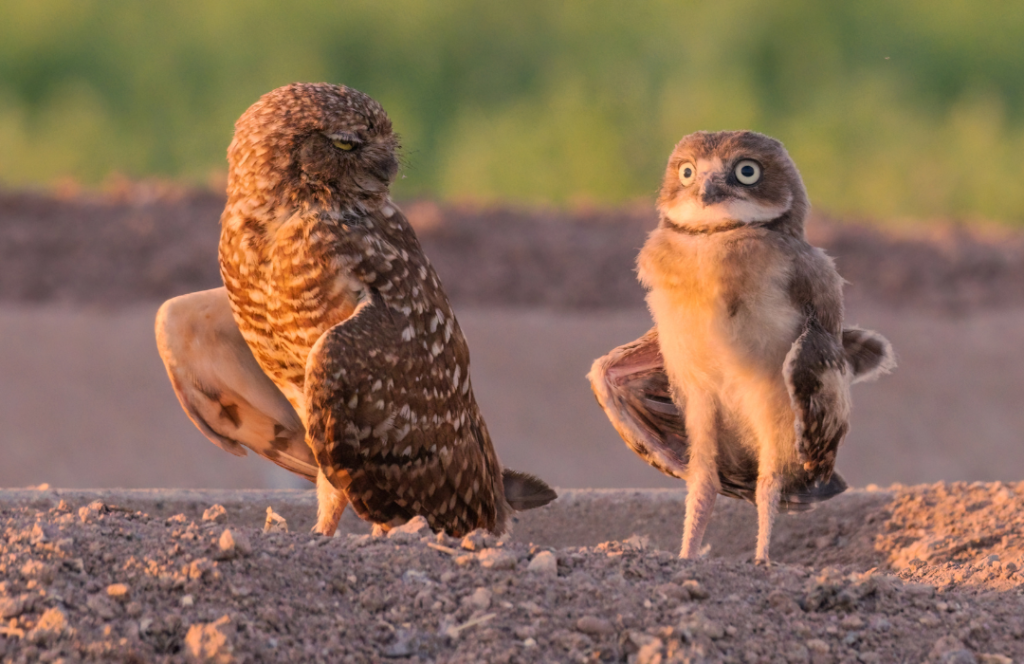
Canada has committed to the goal of protecting 30% of lands, ocean, and freshwater in Canada by 2030. This goal will help protect ecosystems, restore habitats, and fight climate change. All these things are a step in protecting Canada’s at-risk animals—so let’s hold the federal government to their promise.
How to Help
- Visit: Go to the Burrowing Owl Conservation Network to learn more.
- Learn: Stay informed about the Burrowing Owl and its habitat and share this information with your family, friends, and community. You can also sign up for Nature Canada’s monthly e-newsletter.
- Help Out: Support groups and individuals working to save the Burrowing Owl.
- Inspire Change: Encourage farmers and other landowners not to disturb areas Burrowing Owls live in and to use alternatives to pesticides.
- Find out more: Help us end the extinction by taking action for nature today—visit conservation websites like Nature Canada or join one of our campaigns!
Resources
- The Cornell Lab – All About Birds: Burrowing Owl
- COSEWIC – Assessment and Report
- Hinterland – Who’s Who: Burrowing Owl
- SARA – Species Profile
- Wildlife Preservation Canada – Burrowing Owl Recovery

